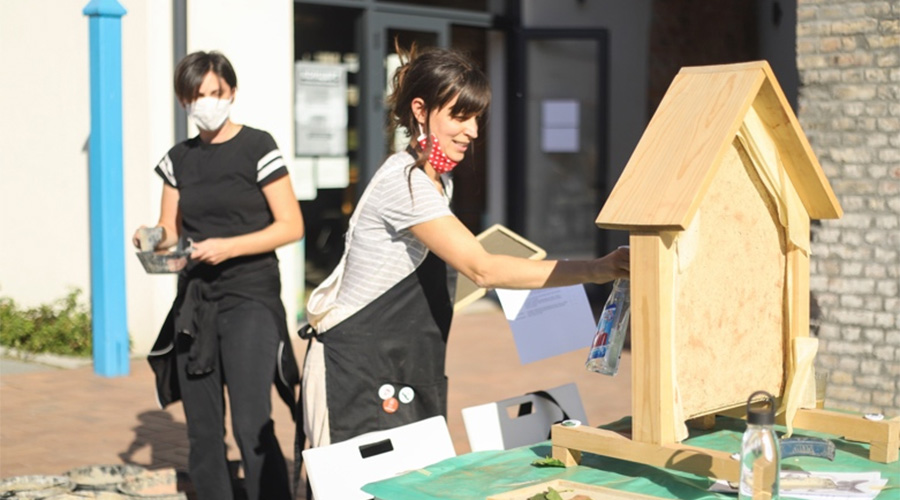

After leaving Serbia in 2005 Dragana Kojicic moved to Rwanda where she worked for architecture studios for three years. In addition to architecture projects of commercial buildings, she spent time exploring construction techniques of housing made of adobe bricks, known as "rukarakara” in Rwanda.
She researched by reading documents kept at the Ethnographic Museum in Huye, travelled to several urban and rural settlements, talked to citizens and masons and was documenting and learning on the process of creating "rukarakara” and constructing with it.
In her home country, Serbia, especially its northern province of Vojvodina, using adobe bricks is a well-known and used material for housing for hundreds of years: some of those still standing and surviving temperature spans from -30 during winters to + 40 degrees Celsius during summers.
Yet, the law was introduced in 1950s that prohibits use of adobe bricks as a material for the construction in urban areas and up to today building permits are not issued for such housing.
As during the last 70 years there was no construction with adobe bricks, indigenous knowledge of the community, "know-how” was lost. Even some of the buildings that were under the state protection as heritage buildings were hardly possible to maintain and repair as there were no skill workers anymore knowing how to deal with the material. That is why Kojicic learning from active construction sites in Rwanda was critical for everything that was later developed in Serbia upon her return home.
After Kojicic returned to Serbia, she founded the Center for Earth Architecture, an NGO, as well as the company "Earth & Craft”. With those, she started organizing summer schools for students of architecture, exhibitions, workshops for children and youth, filming documentaries about the architecture made of adobe bricks, and did other things to further promote earth architecture.


Family house built in 1918 of adobe bricks in Vojvodina, Serbia.
After several years of self-funding all the activities, the Government of Serbia understood the need to support her efforts and gave her grants to further develop the activities. She is now consulting individuals and government institutions on how to repair and maintain buildings made of adobe bricks, and she keeps sharing the knowledge.
Meanwhile, in Rwanda, new guidelines allowing the use of "rukarakara” were developed by the Rwanda Housing Authority, based on research conducted in partnership with Rwanda Polytechnic, Earth Enable, African Design Centre and Green Pact Africa. They recommended a specific type of soil and mixture to be used in the making of adobe bricks, and are now working with Rwanda Standards Bureau on standards to develop the improved version of "rukarakara” – to primarily address the safety issues.
Previously, in 2006, the government introduced the ban on the use of adobe bricks in the construction of houses, that is now lifted and "rukarakara” can be used for construction of free-standing residential houses up to 200 square meters in size.
In both countries, Rwanda and Serbia, constructing with adobe bricks is almost always associated with poverty, yet, more recently global trends in constructing with earth for its thermal benefits, among others, show us the importance of keeping and improving the existing knowledge on constructing with "rukarakara” to be able to respond to the needs of modern society.
The earth is becoming highly important material for today’s construction in relation to climate change. It is locally available reducing transportation-related emissions. Further, the adobe bricks have low embodied carbon values which also reduce the emissions from the building construction. The adobe bricks are not flammable and can be recycled endlessly.
In one of the cultural stations "Svilara” (restored silk factory) in Serbia’s secondary city Novi Sad, Dragana Kojicic just ended up her 2-day workshop for children and adults on earth architecture and its techniques. Once again, she brought to the participants the notion of returning to nature and natural materials, as well as promoting the tradition and architectural heritage through earth architecture.


